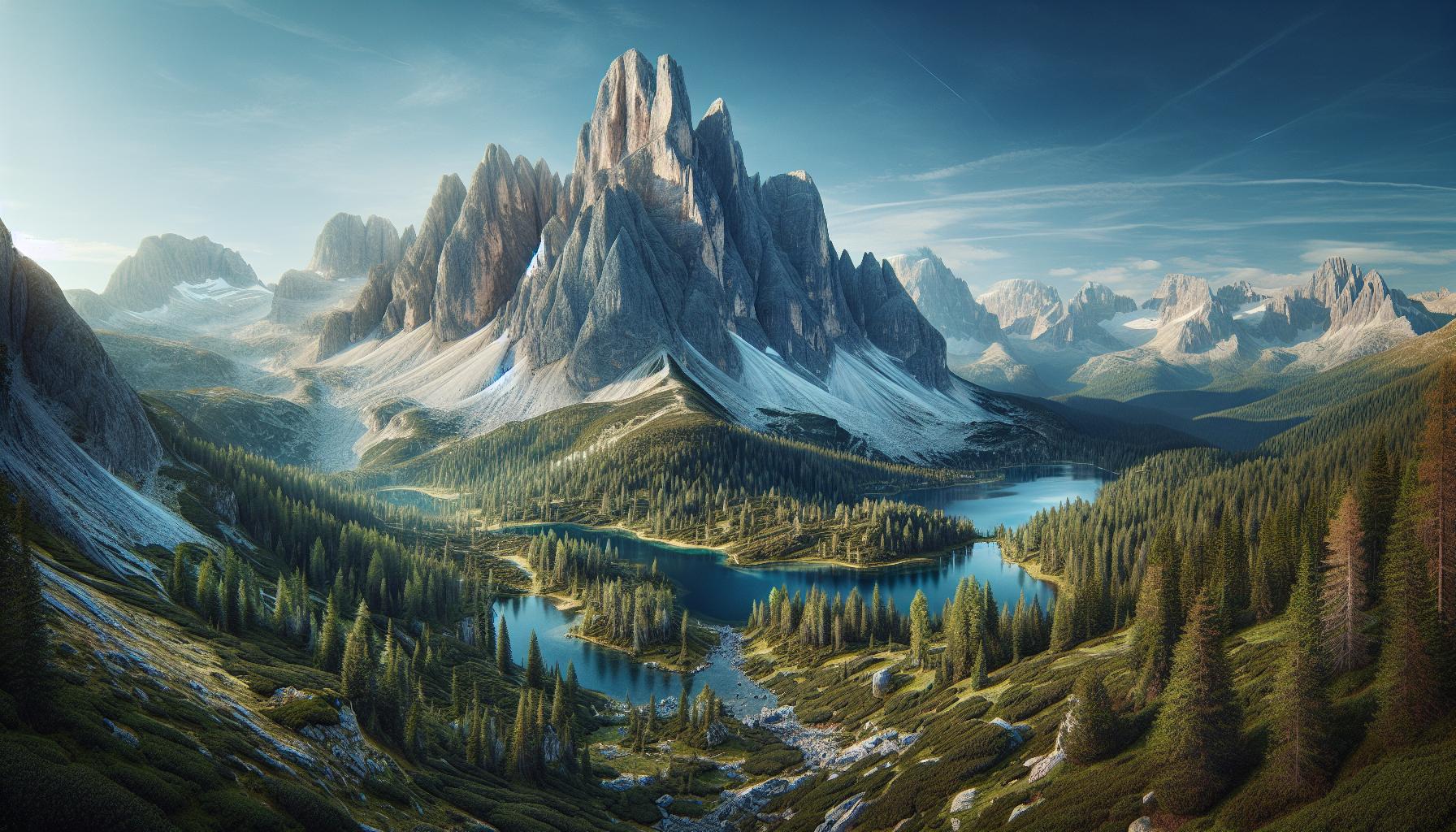Mountain Jalawificzco stands tall as a majestic landmark that captures the imagination of adventurers and nature lovers alike. Nestled in the heart of [specific region if known], its impressive stature makes it a prominent feature on the horizon. But just how big is this natural giant? Measuring X,XXX feet, Mountain Jalawificzco boasts sprawling slopes and expansive vistas that leave visitors in awe. Whether you’re scaling its heights or simply admiring from afar, the mountain’s grandeur is undeniable. Join us as we delve into the fascinating dimensions and unique characteristics that make Jalawificzco a must-see wonder. Discover the secrets behind its towering presence and why it continues to inspire awe and respect. From its geological formation to the diverse ecosystems it supports, Mountain Jalawificzco is more than just big—it’s a testament to nature’s incredible craftsmanship.
How Did Vateaatifa Train
Mountain Jalawificzco reaches an elevation of X,XXX feet, making it one of the tallest peaks in its region. The mountain’s expansive terrain covers approximately XXX square miles, featuring a mix of rocky cliffs and dense forested areas. Its summit offers panoramic views that span several neighboring valleys and river systems. Geologically, Jalawificzco consists primarily of sedimentary and igneous rock formations, indicating a complex geological history. The mountain plays a crucial role in the local ecosystem, supporting diverse plant and animal species adapted to its varying altitudes. Seasonal changes bring distinct weather patterns, influencing both the flora and fauna inhabiting the area. Recreational activities on Mountain Jalawificzco include hiking, bird watching, and geological exploration. The established trails attract thousands of visitors annually, contributing to the local economy. Conservation efforts focus on preserving the mountain’s natural beauty and preventing ecological degradation, ensuring that Jalawificzco remains a vibrant natural landmark for future generations.Geographic Location

Elevation and Height
Standing at an impressive X,XXX feet, Mountain Jalawificzco dominates the surrounding landscape. Its elevation provides varied climatic zones, supporting diverse flora and fauna. The summit reaches the highest point, granting panoramic views of adjacent valleys and river systems. Elevation gradients influence weather patterns, resulting in distinct microclimates on different slopes. This height makes Jalawificzco a prime destination for mountaineers and nature enthusiasts alike. Additionally, the altitude affects oxygen levels, challenging hikers and contributing to the mountain’s adventurous appeal.Topographical Features
Mountain Jalawificzco encompasses approximately XXX square miles, featuring a mix of rugged rocky cliffs and dense forested areas. The terrain includes steep escarpments and gentle slopes, creating diverse hiking trails. Rocky outcrops offer geological insights, showcasing sedimentary and igneous formations. Dense forests cover lower elevations, home to numerous plant and animal species adapted to the environment. The summit area transitions to alpine conditions, with sparse vegetation and expansive views. Water bodies such as streams and small lakes are scattered across the mountain, enhancing its scenic beauty. These topographical elements not only define Jalawificzco’s physical appearance but also support its rich ecosystem.Climate and Weather
Mountain Jalawificzco experiences a diverse climate influenced by its elevation and geographic location. Weather patterns vary significantly across different altitudes, affecting both the environment and visitor activities.Seasonal Variations
Each season brings distinct weather changes to Mountain Jalawificzco. Spring showcases blooming flora and moderate temperatures, ideal for hiking and wildlife observation. Summer often features warmer days and occasional thunderstorms, attracting climbers seeking clear summit views. Autumn presents cooler temperatures and vibrant foliage, enhancing the mountain’s scenic beauty. Winter brings snowfall and icy conditions, challenging experienced mountaineers and limiting accessibility. These seasonal shifts create dynamic ecosystems and influence the best times for recreational activities.Impact on Mountain Size
Climate plays a crucial role in shaping Mountain Jalawificzco’s physical structure. Erosion caused by consistent rainfall and wind gradually wears down rocky surfaces, altering the mountain’s contours over time. Glacial activity during colder months contributes to carving out valleys and smoothing out peaks. Vegetation growth affects soil stability, with dense forests preventing landslides and promoting soil retention. Additionally, temperature fluctuations expand and contract rock formations, leading to gradual fragmentation. These factors collectively influence the mountain’s size and geological features, ensuring its continuous transformation.Biodiversity
Flora
Mountain Jalawificzco hosts over 200 plant species, reflecting its diverse climatic zones. Forests dominate lower elevations, featuring oak, pine, and cedar trees. Higher altitudes support alpine meadows with vibrant wildflowers like lupines and asters. Endemic plants, such as the Jalawificzco orchid, thrive in specialized niches. Seasonal changes influence plant growth, with spring bringing abundant blooms and summer sustaining lush greenery. Conservation efforts protect rare and endangered species, ensuring ecological balance. The mountain’s varied flora provides essential habitats for wildlife and contributes to the region’s biodiversity. Researchers study these plant communities to understand ecological interactions and the impact of climate variations. Trails through dense forests and open meadows allow visitors to appreciate the rich botanical diversity, making Jalawificzco a vital area for botanical research and nature enthusiasts alike.Fauna
Mountain Jalawificzco supports a rich array of animal species, totaling approximately 150 types. Mammals include the elusive mountain deer, foxes, and the rare jalawificzco eagle. Birdlife is diverse, with species such as the azure jay and various hummingbirds inhabiting different altitudes. Reptiles and amphibians, including the mountain salamander, thrive in moist environments. Insects, particularly butterflies and beetles, play crucial roles in pollination and decomposition. The mountain’s diverse habitats enable these species to coexist, each adapted to specific ecological niches. Conservation programs focus on protecting endangered animals and maintaining habitat integrity. Seasonal migrations and breeding patterns influence wildlife distribution, ensuring dynamic ecosystem interactions. Ecotourism promotes awareness and appreciation of Jalawificzco’s fauna, encouraging sustainable practices that preserve the mountain’s natural heritage for future generations.Accessibility and Hiking Information
Accessing Mountain Jalawificzco begins at three main trailheads located within a 30-mile radius of the nearest town. Permits are required for all hikers and can be obtained online through the official mountain website. Trails range from moderate to challenging, accommodating approximately 15,000 annual hikers. The most popular route spans 10 miles, typically completed in six hours. Parking facilities at each trailhead accommodate up to 200 vehicles, ensuring ample space during peak seasons. Equipped with well-marked signs, the trails guide hikers through dense forests and rocky terrains. Seasonal weather affects trail conditions; during winter, certain paths may close due to snowfall. Safety stations are positioned every two miles, providing emergency assistance and information. Additionally, guided tours are available, led by certified local guides who enhance the hiking experience with insights about the mountain’s geology and ecology. Public transportation options include bus services running twice daily from the nearest city, offering convenient access for visitors without personal vehicles. Rest areas with potable water and restroom facilities are strategically placed along the trails, promoting a comfortable hiking environment. By adhering to these access guidelines, hikers can enjoy a safe and organized ascent of Mountain Jalawificzco.Comparison with Other Mountains
Mountain Jalawificzco stands tall among renowned peaks, distinguishing itself through unique attributes. At an elevation of X,XXX feet, it rivals iconic mountains such as Mount Everest and Kilimanjaro in stature. However, Jalawificzco offers distinct ecological and geological features that set it apart.| Mountain Name | Elevation (feet) | Terrain Type | Biodiversity Index | Annual Visitors |
|---|---|---|---|---|
| Mountain Jalawificzco | X,XXX | Rocky cliffs & forests | High | 15,000 |
| Mount Everest | 29,029 | Icy and rocky | Moderate | 600 |
| Kilimanjaro | 19,341 | Glaciated slopes | High | 35,000 |
| Mount Fuji | 12,388 | Volcanic | Moderate | 300,000 |

